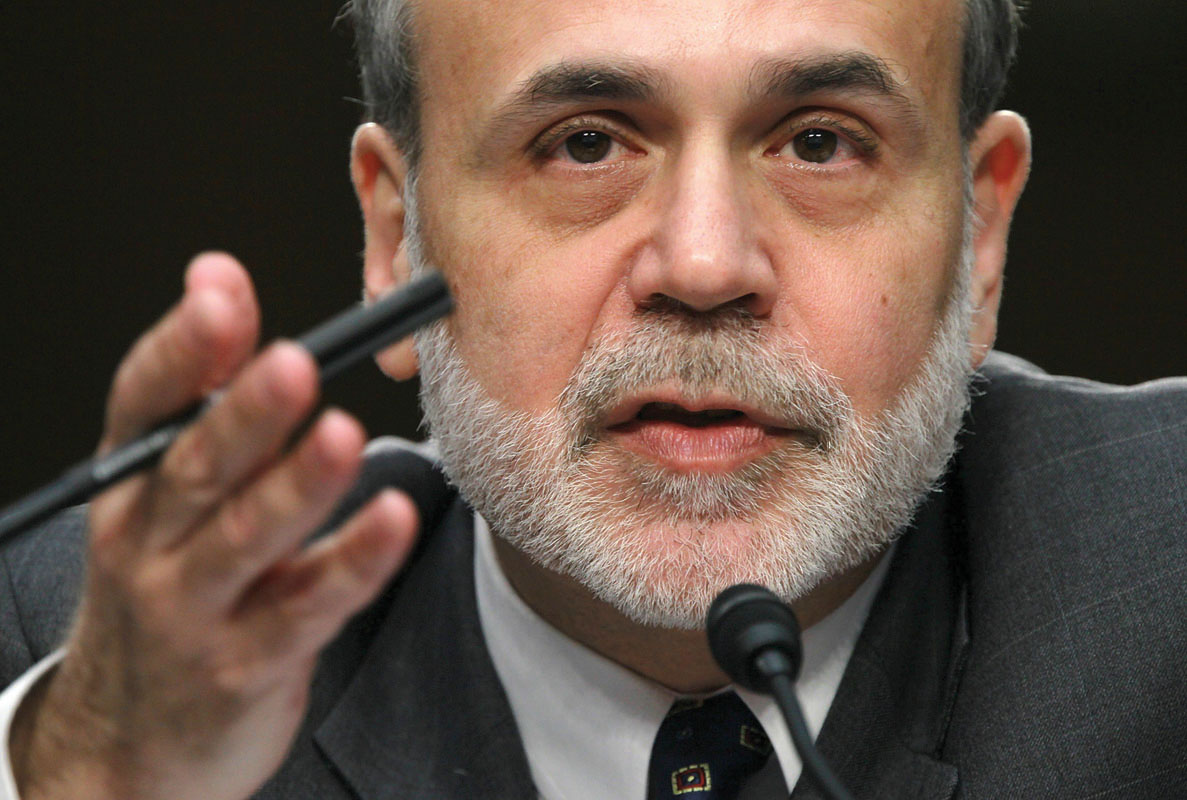Chapter Introduction
Monetary Policy
What You Will Learn in this Chapter
- What the money demand curve is

- Why the liquidity preference model determines the interest rate in the short run

- How the Federal Reserve implements monetary policy, moving the interest rate to affect aggregate output

- Why monetary policy is the main tool for stabilizing the economy

- How the behavior of the Federal Reserve compares to that of other central banks

- Why economists believe in monetary neutrality—that monetary policy affects only the price level, not aggregate output, in the long run

Person of the Year

“A BALD MAN WITH A GRAY beard and tired eyes is sitting in his oversize Washington office, talking about the economy. He doesn’t have a commanding presence. He isn’t a mesmerizing speaker. He has none of the look-at-me swagger or listen-to-me charisma so common among men with oversize Washington offices. His arguments aren’t partisan or ideological; they’re methodical, grounded in data and the latest academic literature. When he doesn’t know something, he doesn’t bluster or bluff. He’s professorial, which makes sense, because he spent most of his career as a professor.”
So began Time magazine’s profile of Ben Bernanke, whom the magazine named Person of the Year for 2009. Who is this mild-mannered man, and why does he matter so much? The answer is that Bernanke is the chairman of the Board of Governors of the Federal Reserve System—the body that controls monetary policy.
People sometimes say that Bernanke decides how much money to print. That’s not quite true: for one thing, the Fed doesn’t literally print money, and beyond that, monetary decisions are actually made by a committee rather than by one man. But as we learned in Chapter 16, the Federal Reserve can use open-market operations and other actions, such as changes in reserve requirements, to alter the money supply—and Ben Bernanke has more influence over these actions than anyone else in America.
And these actions matter a lot. Roughly half of the recessions the United States has experienced since World War II can be attributed, at least in part, to the decisions of the Federal Reserve to tighten policy to fight inflation. In a number of other cases, the Fed has played a key role in fighting slumps and promoting recovery. The financial crisis of 2008 put the Fed at center stage. Bernanke’s aggressive response to the crisis, which, as we saw in Chapter 16, included a tripling of the monetary base, inspired both praise (including his designation as Person of the Year) and condemnation.
In this chapter we’ll learn how monetary policy works—how actions by the Federal Reserve can have a powerful effect on the economy. We’ll start by looking at the demand for money from households and firms. Then we’ll see how the Fed’s ability to change the supply of money allows it to move interest rates in the short run and thereby affect real GDP. We’ll look at U.S. monetary policy in practice and compare it to the monetary policy of other central banks. We’ll conclude by examining the long-run effects of monetary policy. 